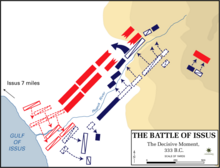This article needs additional citations for verification .(February 2024) |
| Years |
|---|
| Millennium |
| 1st millennium BC |
| Centuries |
| Decades |
| Years |
| 333 BC by topic |
| Politics |
|---|
| Categories |
Year 333 BC was a year of the pre-Julian Roman calendar. At the time, it was known as the Year of the Dictatorship of Rufinus (or, less frequently, year 421 Ab urbe condita ). The denomination 333 BC for this year has been used since the early medieval period, when the Anno Domini calendar era became the prevalent method in Europe for naming years.
